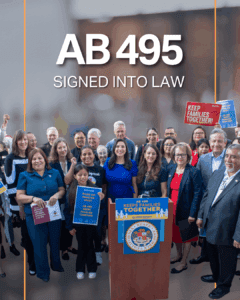This week Coalition for Educational Equity for Foster Youth released a Sample Local Control Accountability Plan for Foster Youth, an important tool for school districts in ensuring that California’s new school funding and accountability system lives up to its promise to end the achievement gap for foster youth.
Under the new system, known as the Local Control Funding Formula or LCFF for short, school districts are provided with additional funds for each foster youth, English language learner, and low-income youth in the district and are required to use those additional funds to improve the educational outcomes of these targeted groups of students. Increased flexibility in the use of funds is balanced with increased accountability for improving outcomes through a Local Control Accountability Plan, or LCAP, that each district must develop and implement. LCAPs must include annual goals that address each of the eight priorities set by the state, including: pupil achievement, pupil engagement, and school climate. Additionally, districts must set out in the LCAP the specific actions, services, and expenditures required to meet each annual goal.
As the State Board of Education was meeting in January to finalize the LCAP template that every district must use, the Coalition for Education Equity for Foster Youth was already meeting to discuss ways to help local school districts meet the unique and distinct needs of foster youth. Unfortunately, foster youth fare persistently poorly on nearly every measure of school success—and do worse than other at-risk youth on a number of those measures. As documented in The Invisible Achievement Gap: Educational Outcomes of Students in Foster Care in California’s Public Schools, foster youth are more likely than other students to change schools during the school year, have the lowest participation rate in California’s statewide testing program, and have the highest dropout rate and the lowest graduation rate. With these challenges in mind, the Coalition developed a sample LCAP for foster youth that school districts can use when developing their local control accountability plans.
The Sample LCAP for Foster Youth lays out three goals aimed at improving academic achievement, reducing school transfers whenever possible, and ameliorating the impact of transfers that are unavoidable. These goals are supported by a comprehensive set of actions and services that call for improved infrastructure, including school board policies, a district-level Foster Youth Liaison focused on implementation of policy as well as coordination with the child welfare agency and other foster youth education stakeholders, and a cadre of foster youth counselors to ensure that each foster youth gets the supports and services they need to achieve. To review the Sample LCAP for Foster Youth click here. A Sample LCAP for County Offices of Education is also available. To review the Sample County LCAP for Foster Youth click here. For more information or assistance utilizing the Sample LCAP for Foster Youth in your school district, please contact Molly Dunn.
Members of the Coalition for Educational Equity for Foster Youth, include: the Alliance for Children’s Rights, Advancement Project, California Youth Connection, Children and Youth Family Collaborative, Children’s Law Center of California, Hillsides, the Los Angeles Department of Children and Family Services, National Center for Youth Law and Public Counsel.




